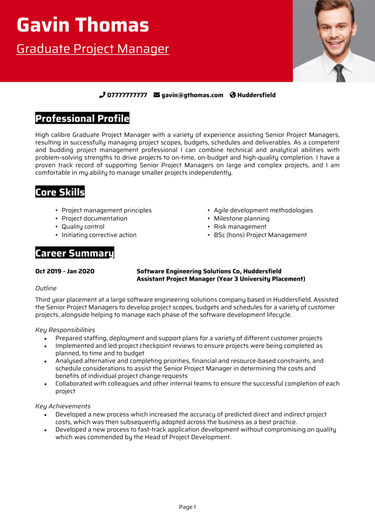It takes precision, patience, and a sharp eye to be a radiographer – but landing the role you want takes more than just technical expertise. Whether you’re newly qualified or building on years of clinical practice, the real challenge is making your experience shine on paper.
A well-prepared CV is your professional snapshot – showcasing your diagnostic know-how and ability to thrive in clinical environments. This guide and its Radiographer CV examples will help you frame that picture clearly, so your next opportunity sees you just as clearly as you see your patients.
Diagnostic Radiographer CV
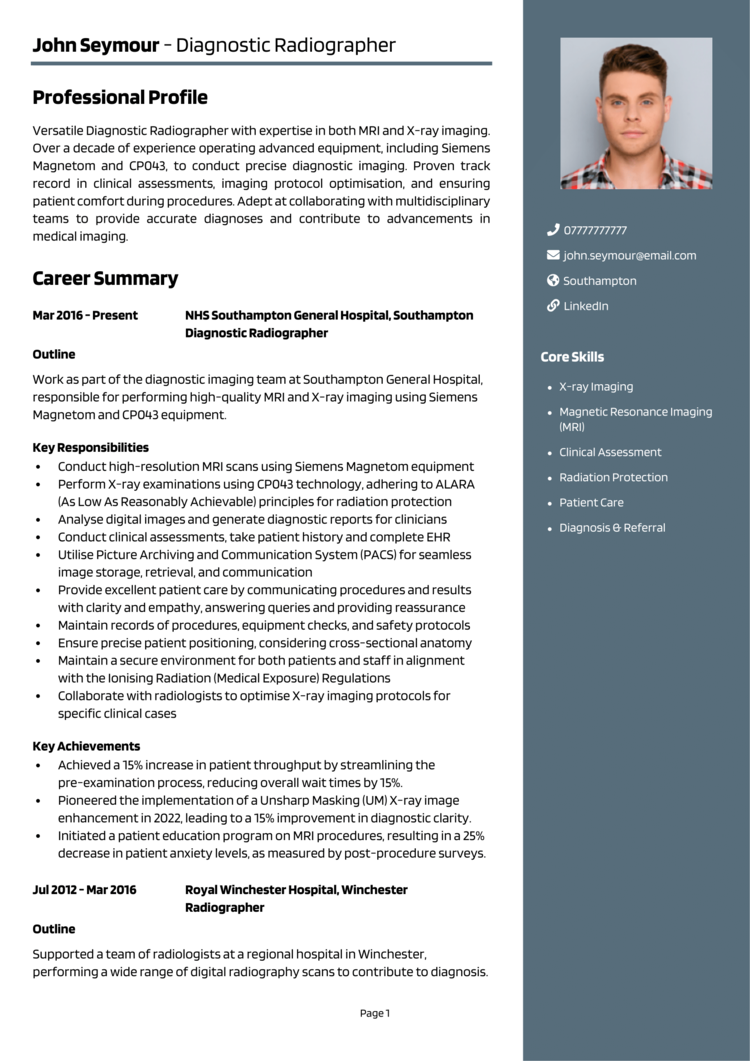
Senior Radiographer CV
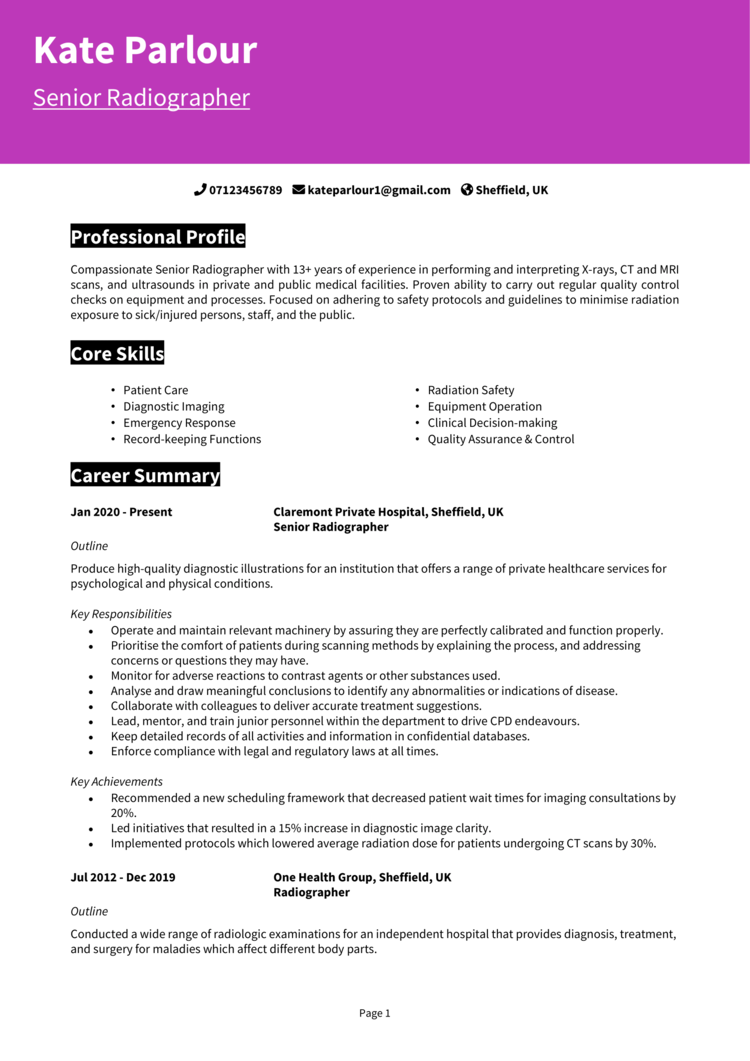
CT Radiographer CV example
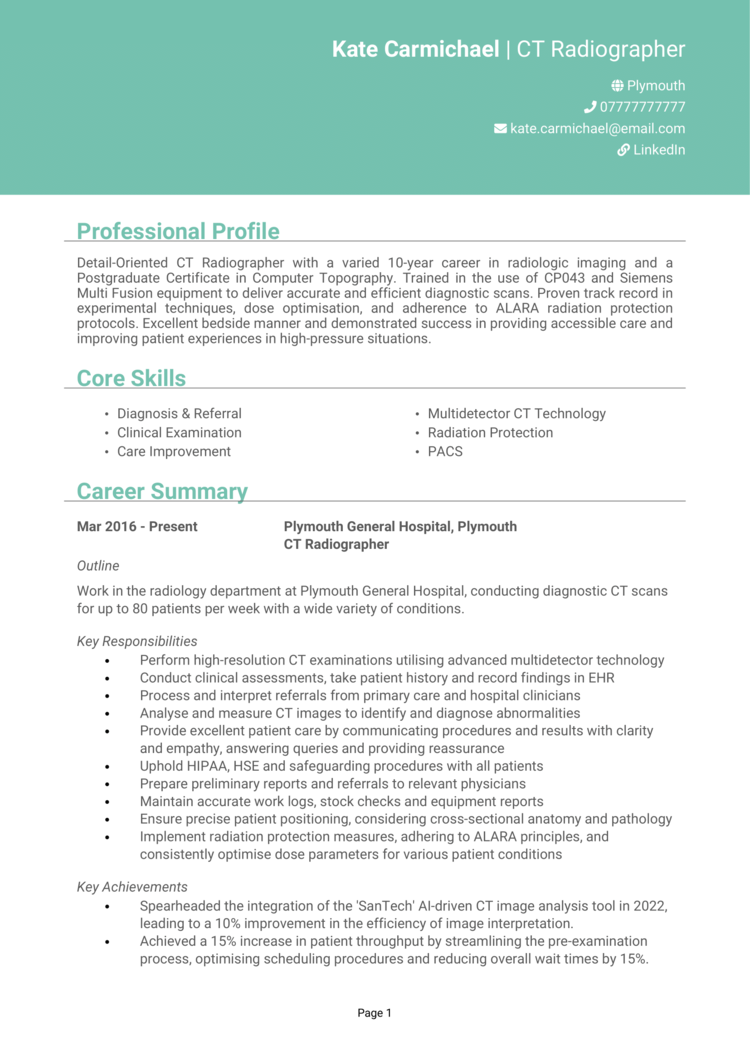
MRI Radiographer CV example
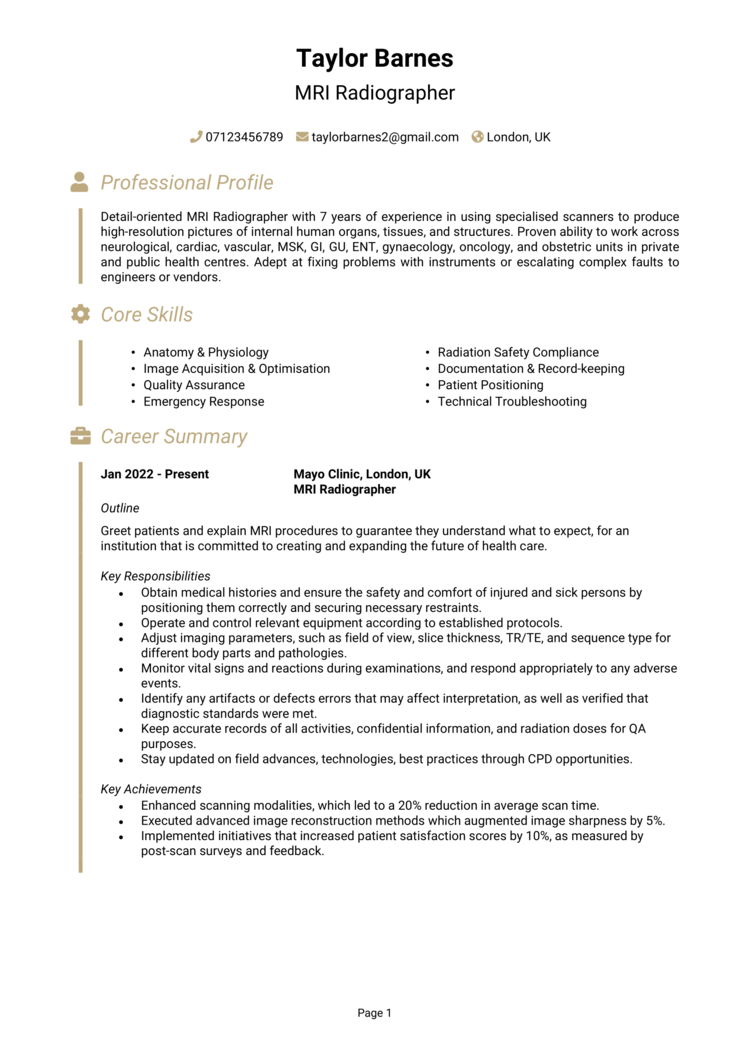
How to write your Radiographer CV
Discover how to craft a winning Radiographer CV that lands interviews with this simple step-by-step guide.
Your job is all about clarity – and your CV should be no different. Recruiters need to see at a glance that you’ve got the right training, the right mindset, and the right clinical experience.
This guide will take you through the process of writing a CV: your qualifications, experience, and achievements, to showcase your ability to work safely and compassionately in a radiography setting.
Structuring and formatting your Radiographer CV
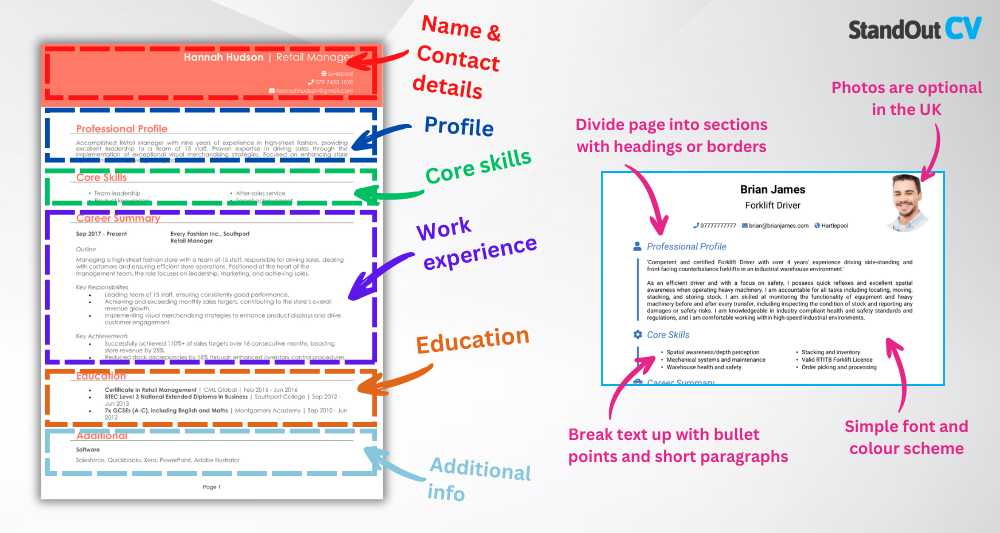
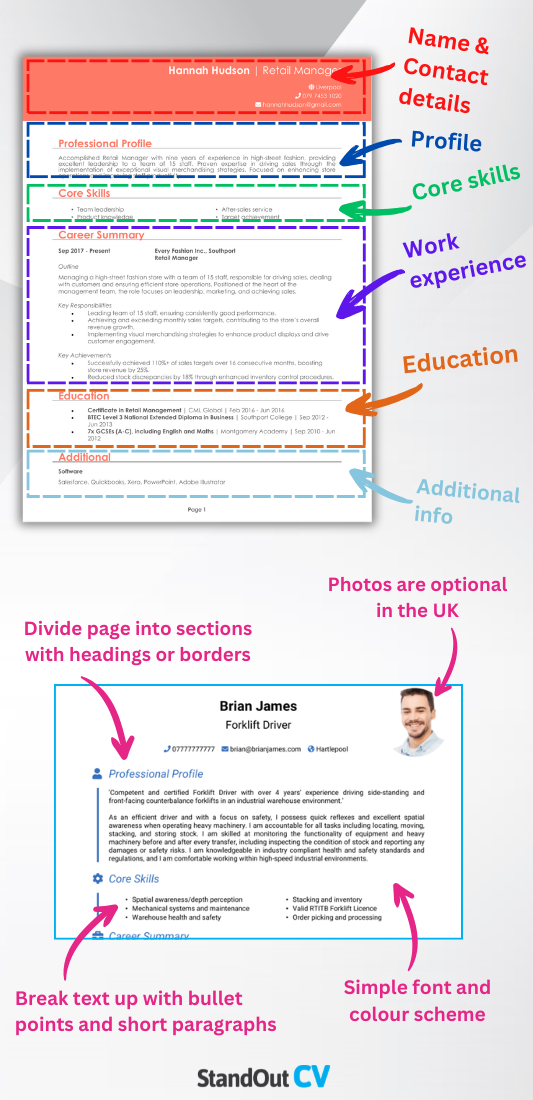
Radiographers operate in settings where accuracy is essential – and your CV should reflect that same level of organisation. A strong layout helps recruiters quickly understand your clinical competencies and suitability for the role, so they can instantly see the value you’ll bring to the table.
Here’s the structure to follow:
- Name and contact details – Place personal details at the top so employers can get in touch easily.
- Profile – A short paragraph that summarises your radiography background and professional goals.
- Core skills – Bullet point your top abilities, focusing on clinical, technical, and interpersonal strengths.
- Work experience – List your clinical roles in reverse order, including placements if newly qualified.
- Education & certifications – Outline your academic and professional qualifications, including HCPC registration.
- Additional info – This optional section can include professional memberships, awards, or hobbies that showcase your suitability for the roles.
Use bullet points to present key responsibilities and outcomes clearly, and divide your CV format with bold section headings. Keep your font professional and easy to read, and keep the length under two pages (save any more for a cover letter). Recruiters don’t have time to dig for key details – your CV should deliver the highlights efficiently and cleanly, without any distracting mistakes.
The best way to write a Radiographer CV profile
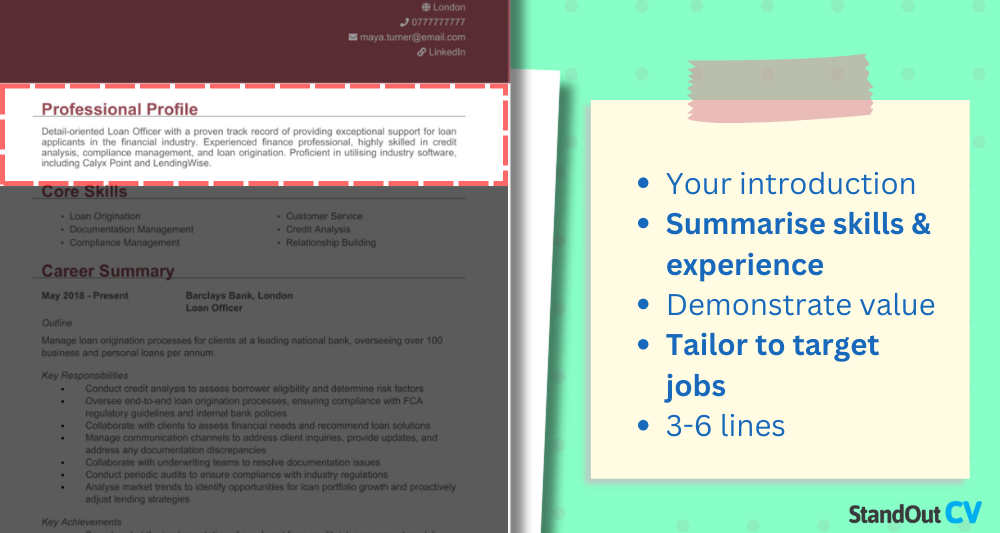
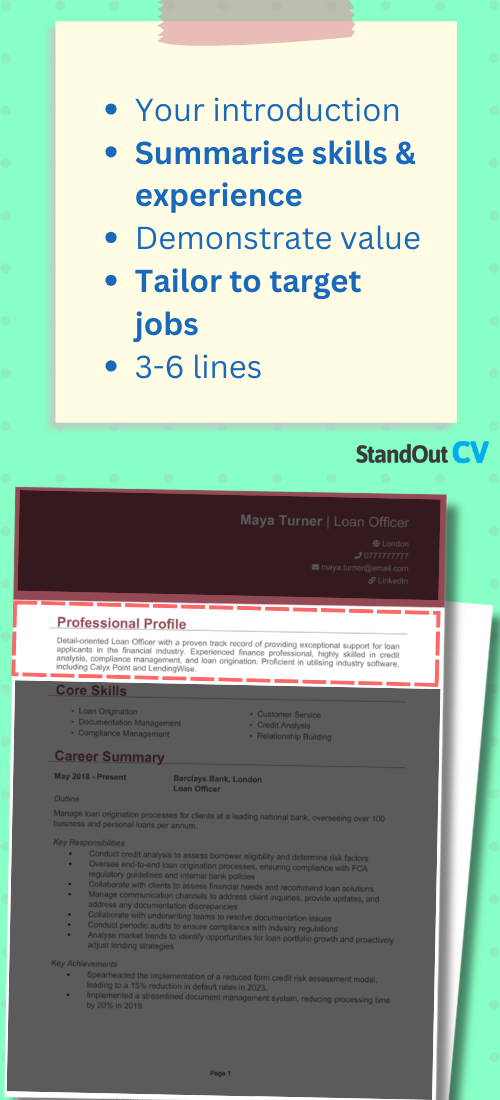
Your CV profile gives a concise overview of your radiography qualifications and the environments you’ve worked in. It should communicate not just your technical competence, but your teamwork and patient-focused mindset, all with the ultimate goal of convincing recruiters that you can offer them real value.
Radiographer CV profile examples
Profile 1
Qualified and compassionate Radiographer with three years of experience in NHS hospital settings, delivering high-quality diagnostic imaging across general, trauma, and theatre environments. Skilled in operating digital radiography and fluoroscopy equipment, adhering to radiation safety protocols, and supporting patients throughout their procedures. Committed to accuracy, professionalism, and providing patient-centred care.
Profile 2
Diligent Diagnostic Radiographer with four years of clinical experience in both acute and outpatient departments. Proficient in producing high-resolution X-ray images, supporting multidisciplinary teams with timely results, and maintaining patient comfort during procedures. Knowledgeable in PACS, RIS, and IR(ME)R standards. Recognised for calmness under pressure and consistent image quality.
Profile 3
Experienced Radiographer with over five years in fast-paced healthcare environments, including A&E, orthopaedics, and mobile radiography. Skilled in positioning techniques, image processing, and radiation protection. Proficient in using Siemens and GE imaging systems, with strong communication skills and a compassionate approach to care. Focused on diagnostic accuracy and collaborative teamwork.
Details to put in your Radiographer CV profile
Here’s what to include:
- Where you’ve worked – Mention the hospitals, diagnostic centres, or clinics where you’ve gained experience.
- Your top qualifications – Include your BSc in Diagnostic Radiography or equivalent, along with HCPC registration.
- Essential skills – Refer to your ability to follow procedures, communicate with patients, and operate imaging equipment safely.
- Experience with specific imaging environments – Reference areas such as general X-ray, CT, MRI, or A&E exposure.
- Patient-centred approach and professionalism – Highlight your empathy, communication skills, and ability to maintain dignity in clinical settings.
How to present your core skills section properly
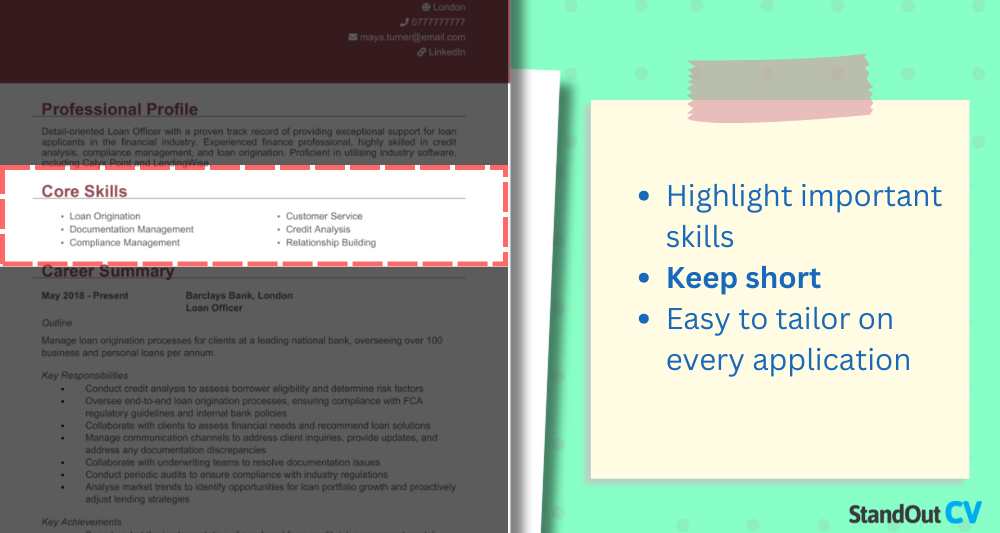

This section is a quick way to present the qualities that make you an effective radiographer. Rather than simply listing buzzwords, use this space to reinforce your strengths in delivering safe, accurate diagnostic services while working collaboratively with other healthcare professionals.
Tailor your CV skills to match each role you apply for – highlighting the types of environments you’ve worked in and your approach to patient care in high-pressure clinical settings. Make sure each skill you include genuinely reflects your experience and readiness to deliver quality imaging services.
Key skills that make a Radiographer CV stand out
- Diagnostic Imaging Operation – Performing high-quality diagnostic scans using X-ray, CT, MRI, or ultrasound equipment to aid clinical diagnosis.
- Patient Positioning and Preparation – Ensuring patients are correctly positioned and informed before and during imaging procedures.
- Radiation Safety and Protection – Applying ALARA principles and protective measures to minimise radiation exposure for patients and staff.
- Image Analysis and Quality Assurance – Reviewing images for clarity and accuracy, and ensuring diagnostic standards are met before reporting.
- Collaboration with Healthcare Professionals – Working closely with radiologists, doctors, and other healthcare staff to deliver coordinated care.
- Equipment Maintenance and Troubleshooting – Operating, calibrating, and reporting faults in imaging equipment to ensure consistent functionality.
- Patient Care and Communication – Providing reassurance, clear instructions, and support to patients, including those with anxiety or special needs.
- Adherence to Protocols and Regulations – Following NHS and HCPC guidelines, infection control measures, and departmental procedures.
- Emergency Imaging Response – Providing rapid imaging services in trauma or emergency settings to support critical diagnoses.
- Professional Development – Keeping up-to-date with technological advances and continuing education through CPD and training.
How to present your work experience in your CV
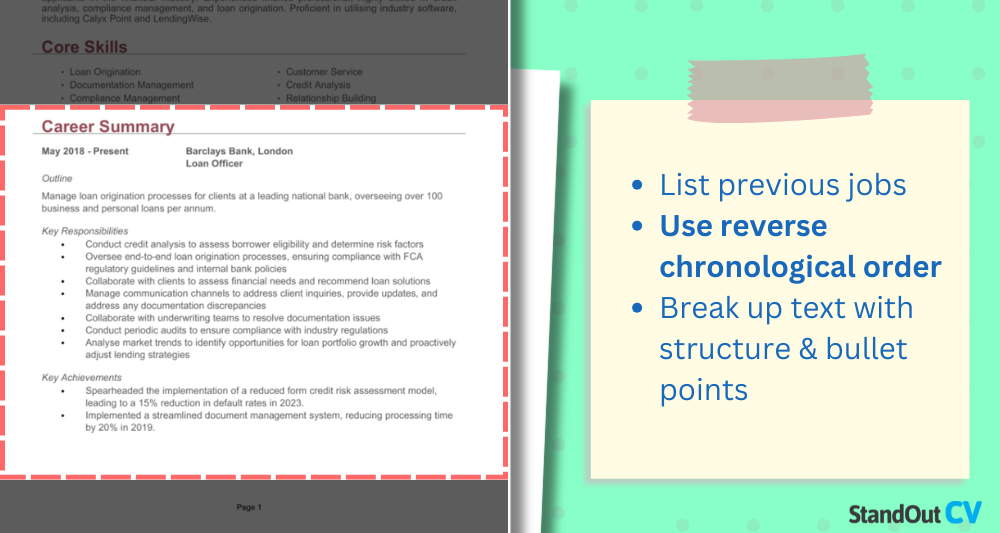
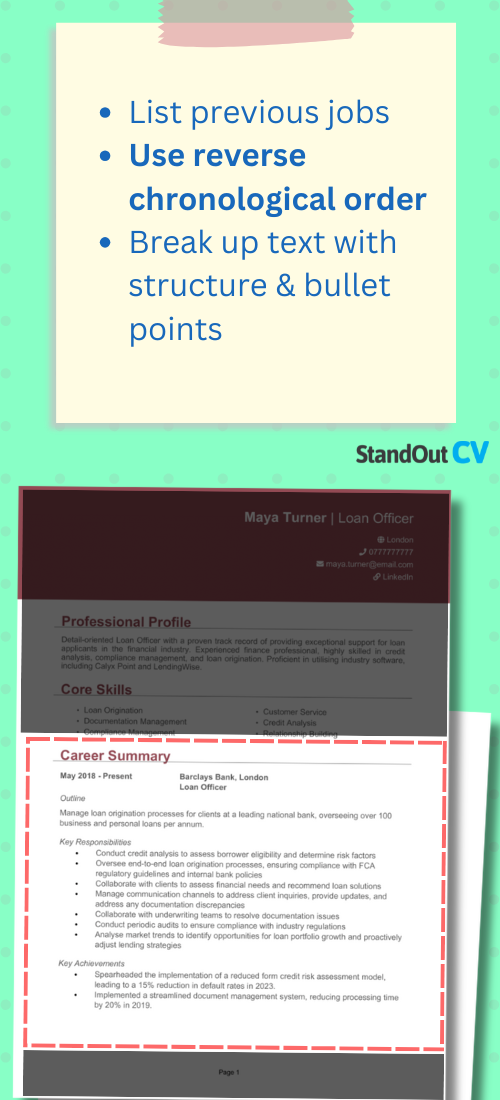
Whether you’re an experienced radiographer or just starting out, your work experience section should show how you’ve put your training into practice. Employers are looking for evidence of accurate imaging and the ability to work as part of a multidisciplinary team.
List your roles from most recent to oldest, including job title, employer name, and dates. Break each role into bullet points that describe your day-to-day responsibilities and the types of patients or departments supported. If you’re newly qualified, you can include placement experience here.
How should you list jobs on your Radiographer CV?
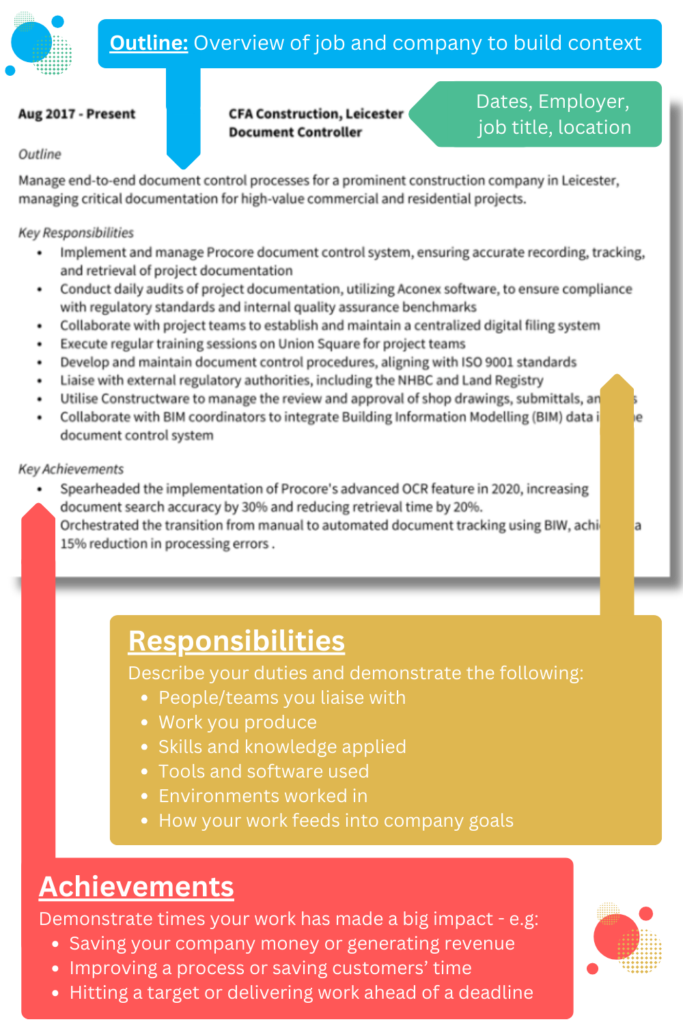
- Outline – Introduce the hospital or department and your role within the team.
- Responsibilities – Use action words like “performed,” “positioned,” “collaborated,” or “assisted.”
- Achievements – Mention measurable outcomes or feedback, such as “maintained excellent image quality compliance” or “commended for communication during anxious patient exams.”
Work history examples for Radiographers
Radiographer | Northfield NHS Foundation Trust
Outline
Provided high-quality diagnostic imaging for a busy NHS hospital, supporting trauma, general, and inpatient referrals across a range of departments.
Responsibilities
- Performed general radiography including chest, abdominal, and musculoskeletal X-rays.
- Operated DR systems and maintained image quality in accordance with department protocols.
- Positioned patients appropriately, ensuring comfort and radiation safety compliance.
- Assisted with portable X-rays in ITU and A&E settings.
- Maintained accurate records using RIS and PACS systems.
Achievements
- Achieved consistent audit compliance for image quality and safety checks.
- Reduced patient waiting times by 15% through efficient workflow coordination.
- Received positive feedback from patients for professionalism and reassurance.
Radiographer | Brightvale Imaging Centre
Outline
Delivered outpatient imaging services for a private diagnostics provider, ensuring accuracy, efficiency, and a positive patient experience.
Responsibilities
- Conducted general and orthopaedic radiographic examinations as part of routine and urgent referrals.
- Prepared imaging rooms and maintained equipment in line with service standards.
- Provided clear instructions and reassurance to patients throughout procedures.
- Worked closely with radiologists to support timely reporting and follow-up care.
- Adhered to IRR17 and IR(ME)R regulations in all imaging activities.
Achievements
- Completed an average of 35 examinations per day with a 98% image quality success rate.
- Supported introduction of a new digital system by training junior staff.
- Praised by management for attention to detail and excellent patient feedback.
Radiographer | Elmhurst Hospital
Outline
Supported emergency and theatre imaging services within a large NHS trust, working closely with surgical and A&E teams to provide real-time diagnostic support.
Responsibilities
- Provided intraoperative imaging in theatre using mobile C-arms and fluoroscopy equipment.
- Performed trauma X-rays in A&E with rapid turnaround for critical cases.
- Liaised with radiologists and surgeons to ensure diagnostic needs were met.
- Complied with infection control procedures during cross-departmental imaging.
- Documented examinations accurately and ensured prompt image availability.
Achievements
- Recognised by the surgical team for dependable theatre support during orthopaedic procedures.
- Helped reduce repeat imaging rates by 20% through improved positioning techniques.
- Participated in radiation safety training and contributed to revised departmental protocols.
Presenting your education history
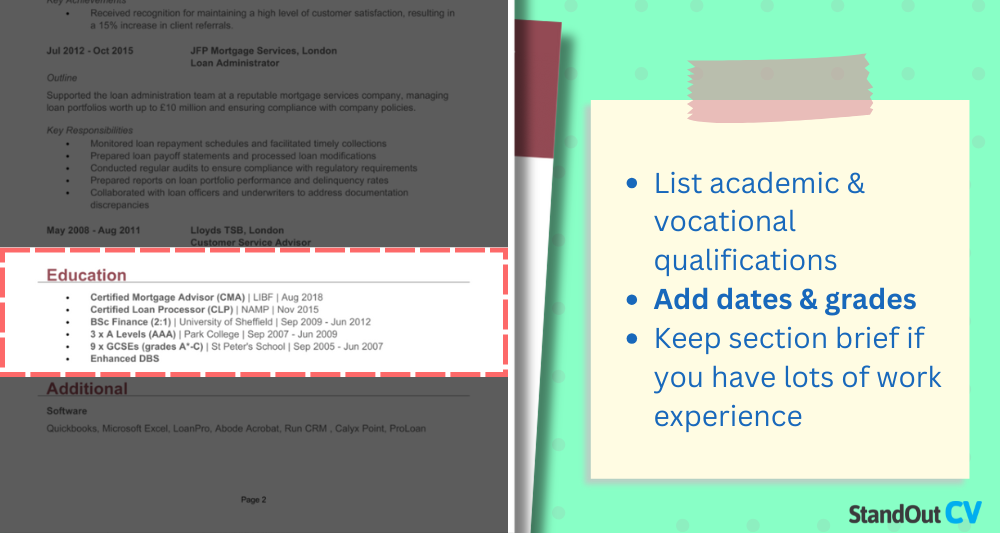

Radiography is a regulated profession, so your education and certifications carry real weight. List your qualifications in reverse order, starting with your radiography degree and HCPC registration. Include any additional training, such as radiation protection or cannulation, as well as short CPD courses relevant to the role.
Don’t forget to mention professional memberships (e.g. Society of Radiographers) and any in-progress studies. With all that in mind, this section should be short: keep the focus on your work experience instead.
Best qualifications for a Radiographer
- BSc (Hons) Diagnostic Radiography – The essential academic qualification to practise.
- HCPC Registration – Legally required to work as a radiographer in the UK.
- IR(ME)R and Radiation Protection Training – Demonstrates safety knowledge and compliance.
- Cannulation Certificate or IV Contrast Training – Required for certain imaging procedures.
- CPD or short courses in CT, MRI, or Ultrasound – Shows continued development and specialism.





